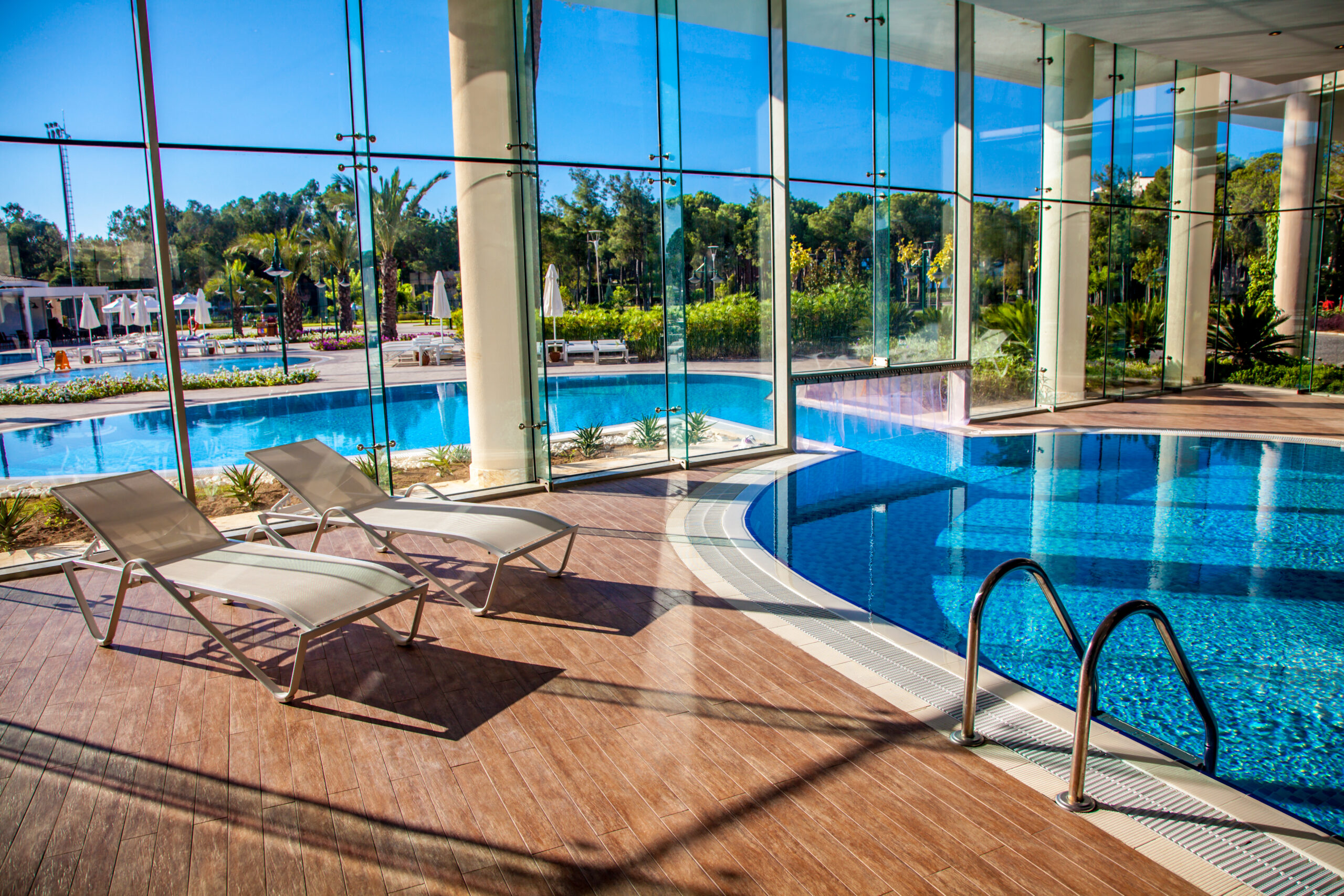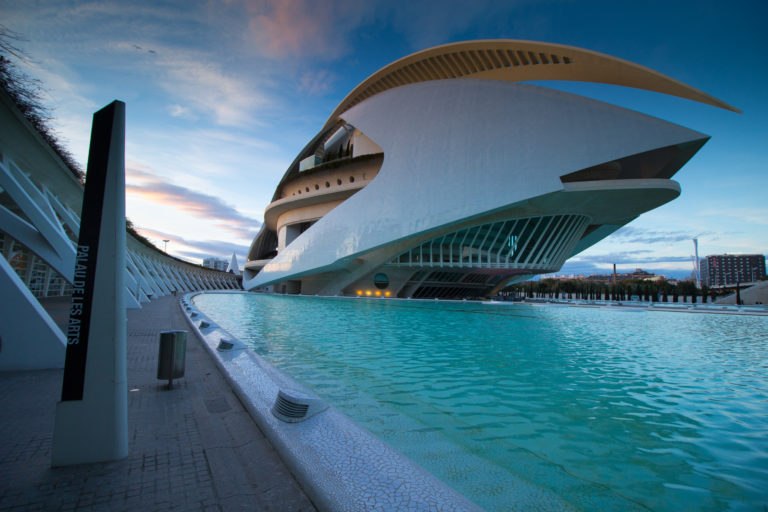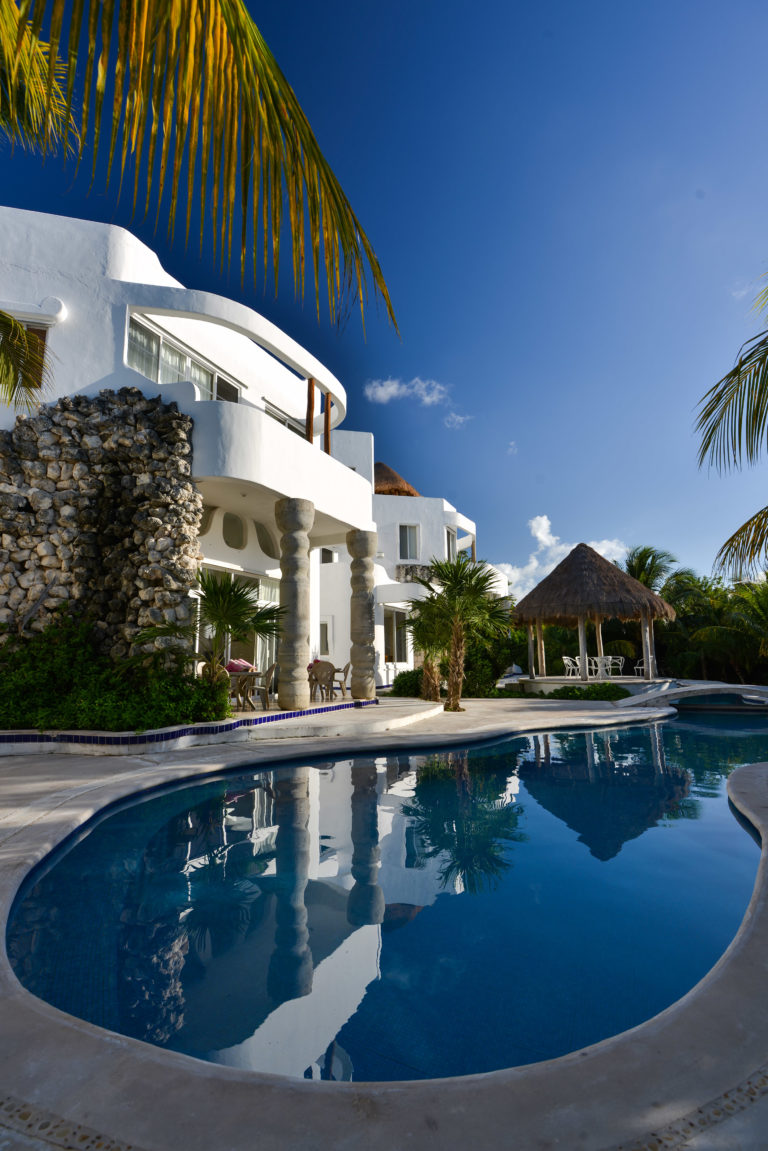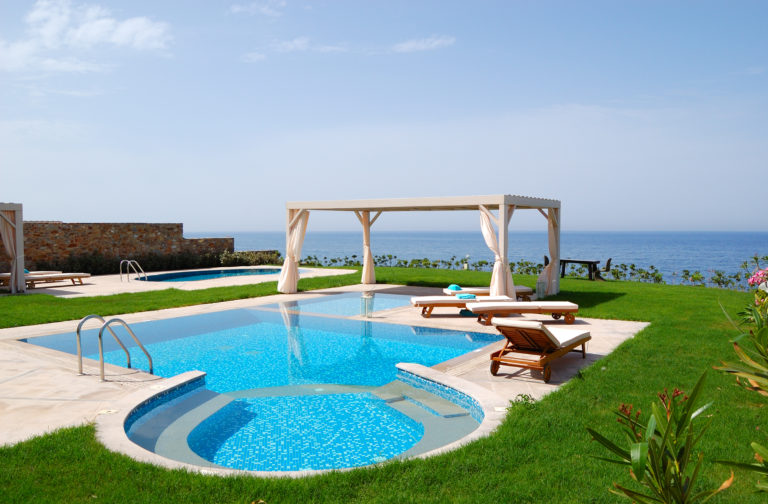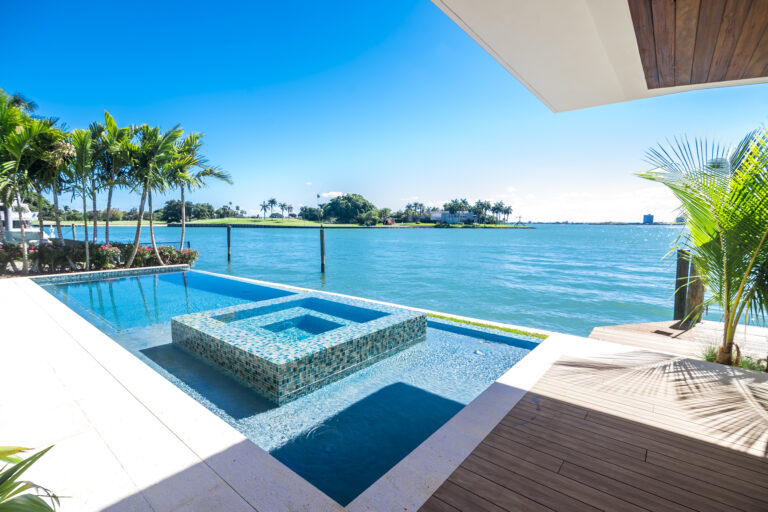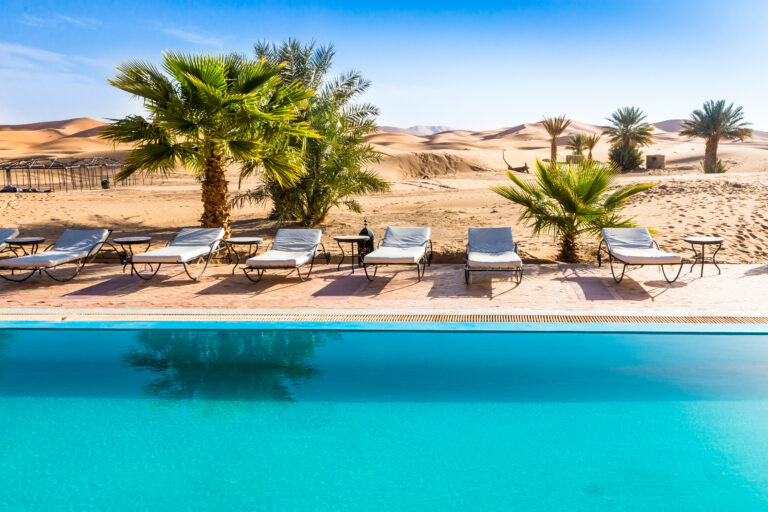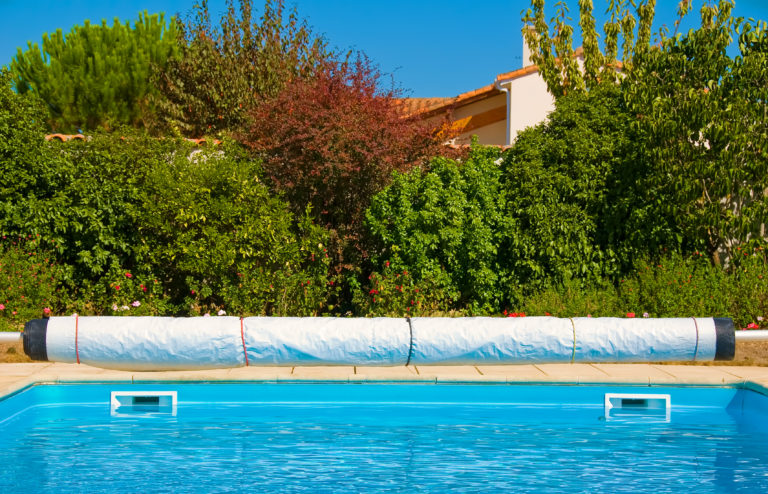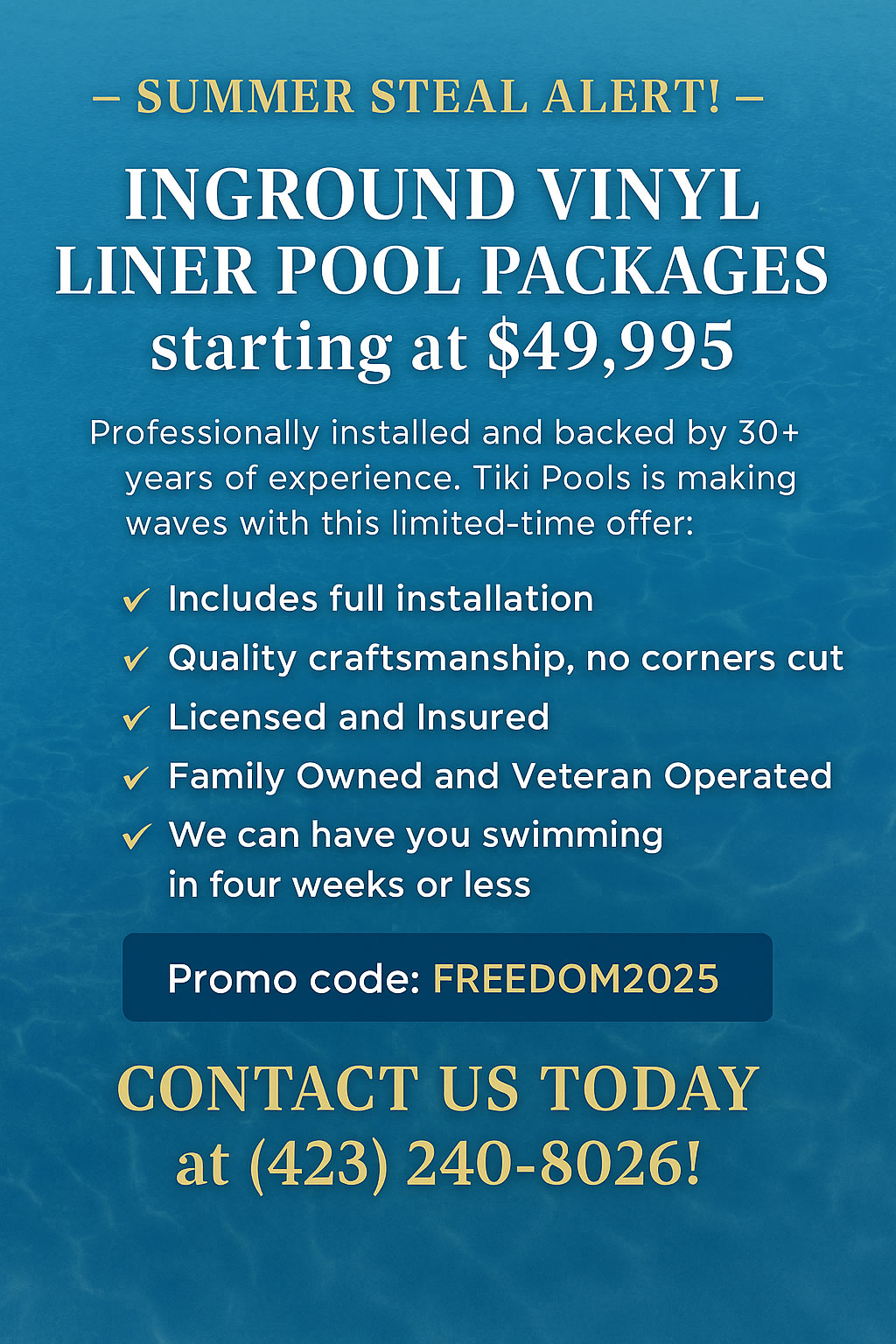Indoor vs Outdoor Pools Pros Cons and Considerations
You’re thinking about installing a pool, but can’t decide between indoor or outdoor? We’ve got you covered!
This article dives into the pros and cons of each choice. You’ll learn about cost differences, maintenance needs, health and safety concerns, and more.
We’ll even touch on how climate should factor into your decision. Let’s get started to help you make an informed choice that suits your lifestyle and budget perfectly.
Understanding Indoor Pools: Benefits and Drawbacks
Let’s delve into the world of indoor pools, recognizing both their advantages and disadvantages. Imagine you’re swimming in a pool with perfect pool lighting, providing just the right ambiance for an evening swim. Sounds amazing, doesn’t it? Well, that’s one advantage of having an indoor pool.
Pool lighting can be manipulated indoors to your preference, creating an atmosphere that suits you best. Whether you want a bright environment for a morning workout or soft lights for a calming swim after work, the options are endless.
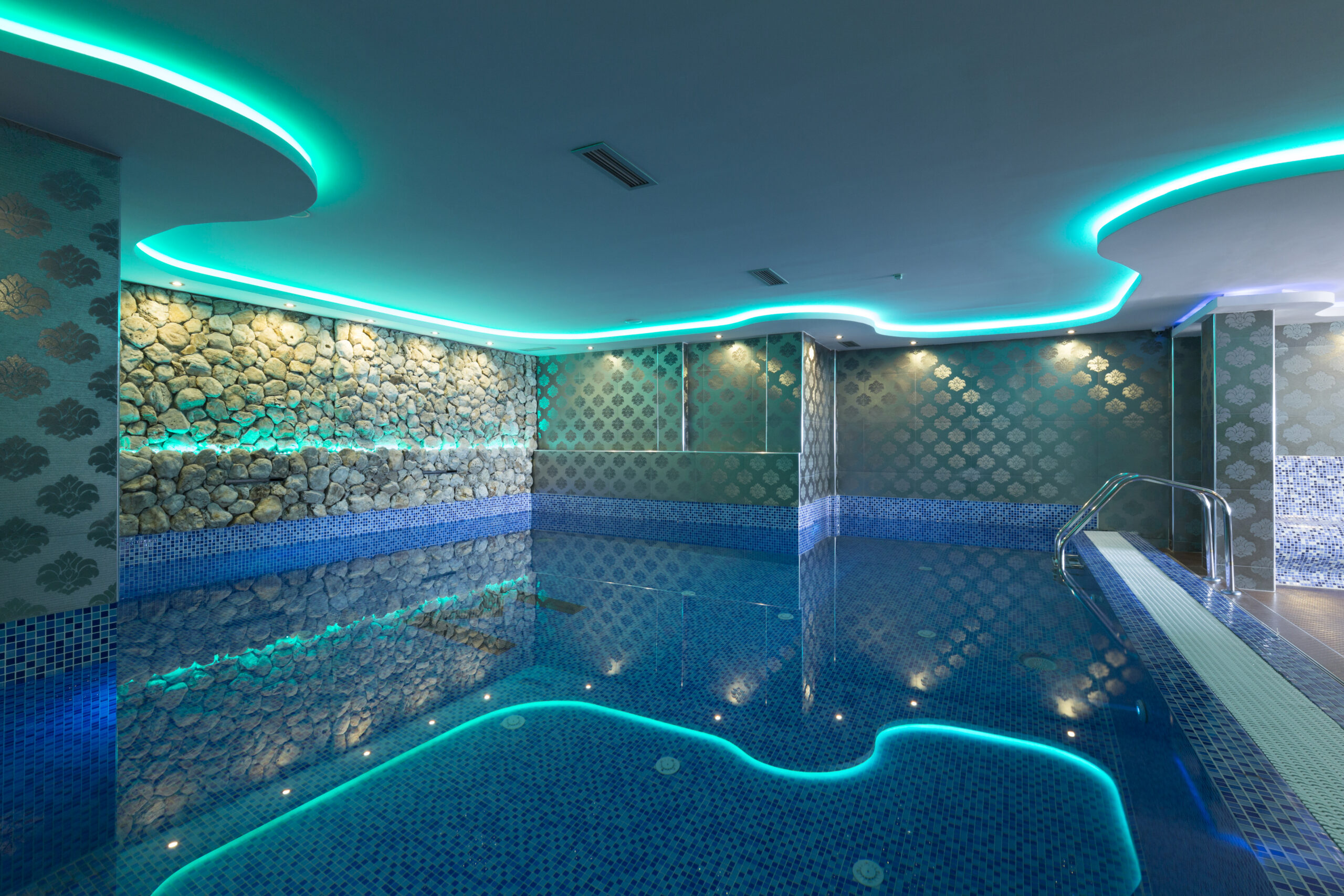
Yet there’s another side to this coin-indoor humidity. While enjoying your well-lit watery haven, it’s important to remember that indoor pools increase moisture levels in your home. This additional humidity can lead to condensation on walls and windows if not properly managed.
But don’t let this discourage you! There are ways around this potential drawback such as installing proper ventilation systems or dehumidifiers. You’ll need to consider these factors when planning for an indoor pool.
Indoor pools offer unique benefits like customizable pool lighting but can also present challenges related to indoor humidity. As long as you’re prepared and informed about these aspects, diving into an indoor swimming experience could be just what you need!
Exploring Outdoor Pools: Advantages and Disadvantages
You’re about to delve into the perks and downsides of having your own open-air swimming space. An outdoor pool can be a luxurious addition to any home, but it’s crucial to consider both its benefits and limitations.
The main advantage of an outdoor pool is undoubtedly Pool Accessibility. Unlike indoor pools, there’s no need for special construction or renovation. You’ve got the entire yard at your disposal, giving you the freedom to design it as large or as small as you want.
However, Seasonal Usage becomes a concern with outdoor pools. Unless you live in a region with year-round warm weather, it’s likely that your pool will be out of commission during colder months. This could lead to:
– Increased maintenance costs for winterizing and reopening.
– Limited use compared to an indoor pool.
– Potential damage from harsh weather conditions.
Additionally, privacy might be another downside if your yard isn’t adequately shielded from neighbors’ views. Despite these drawbacks, having an outdoor pool gives you direct access to natural sunlight and fresh air while swimming which can significantly enhance your overall experience. Remember – every choice comes with trade-offs!
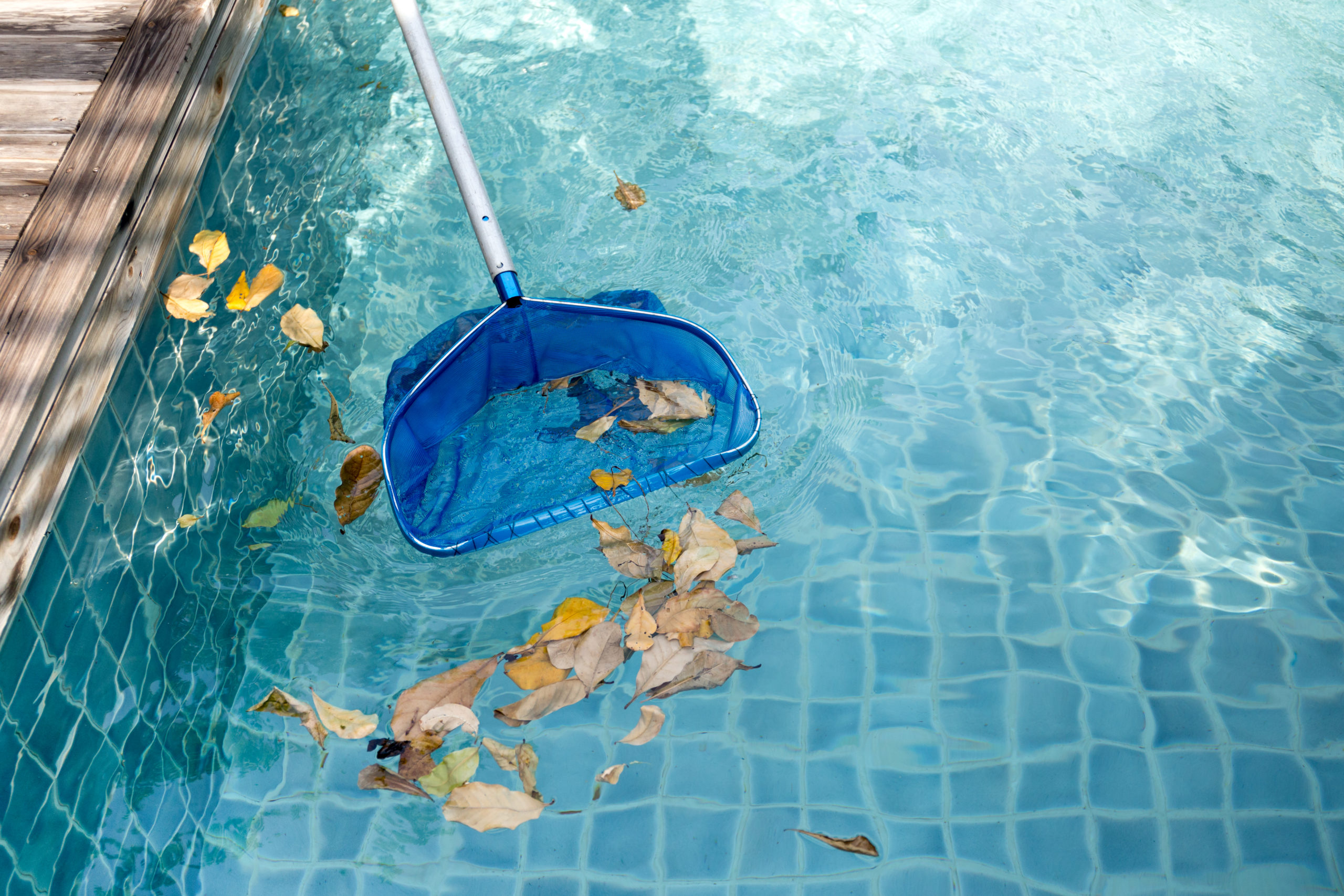
Key Factors to Consider When Choosing Between Indoor and Outdoor Pools
When deciding between a swim in the great outdoors or within your home’s confines, it’s essential to weigh factors such as accessibility, seasonal usage, privacy, and overall experience. Consider the pool regulations both indoors and outdoors. Regulated safety features can provide peace of mind, especially if you’ve got kids around.
Indoor pools often come with accessibility features like ramps or lifts for those who need assistance. They’re easily accessible regardless of the weather conditions outside. However, they may not offer the same level of privacy as an outdoor pool hidden from prying eyes by high fences.
Outdoor pools allow for seasonal use, typically more enjoyable during warmer months. You’ll be able to soak up some vitamin D while taking a dip – something that indoor swimming won’t offer. But remember to check local pool regulations regarding fencing and safety equipment.
Impact of Climate on the Choice of Indoor Vs Outdoor Pools
Climate should definitely factor into your decision, as it’ll determine how often you can comfortably use an outside swimming area versus one inside. If you’re in a region with mild weather year-round, an outdoor pool might be the best fit for you. You’d get to enjoy the sun and fresh air most of the time and wouldn’t have to worry much about seasonal usage restrictions.
On the flip side, if your locale has harsh winters or sweltering summers, consider an indoor pool. They’re climate resilient and allow for swimming regardless of what’s happening outside. Cold winter days won’t freeze your fun nor will hot summer ones make it unbearable.
Remember though, indoor pools require ventilation systems to control humidity levels and maintain air quality. So upfront costs may be higher but they offer year-round swimming advantages that outdoor pools can’t beat in certain climates.
In essence, understanding your local climate is vital when choosing between an indoor or outdoor pool. It impacts not just seasonal usage but also long-term maintenance requirements due to its influence on climate resilience measures needed for each option. Make sure you weigh these considerations before making a final decision.
Maintenance Aspects: Indoor Vs Outdoor Pools
Maintenance aspects shouldn’t be overlooked while deciding between an inside or outside swimming area. Both types of pools require regular care, but the specifics can vary greatly.
Outdoor pools require more intensive pool sanitization due to exposure to natural elements such as leaves, dirt, and insects which can quickly contaminate your water. On the other hand, indoor pools aren’t subject to such environmental factors; they still need sanitizing though due to constant human use.
| Indoor Pools | Outdoor Pools |
| Lower Pool Sanitization needs | Higher Pool Sanitization needs |
| Stable Filtration systems requirements | Variable Filtration systems requirements |
In terms of filtration systems, outdoor pools may demand more frequent checks and adjustments because weather changes affect water chemistry. Your indoor pool’s filtration system isn’t as affected by external factors; it’s mostly influenced by how often you’re using the pool.
So remember this: if you’re not up for high maintenance tasks but want a private swim anytime – go for an indoor pool. But if you love being in sync with nature’s rhythm and don’t mind some extra work – an outdoor pool is what you need!
Cost Comparison: Indoor and Outdoor Pools
You’re considering installing a pool, but you’re unsure of the costs involved.
Let’s dive into the two main financial aspects you’ll need to consider: the initial installation expenses and long-term maintenance costs.
We’ll compare these factors for both indoor and outdoor pools, providing you with a comprehensive understanding to help shape your decision.
Initial Installation Expenses
It’s important to note that initial installation costs for indoor pools tend to be higher than their outdoor counterparts. You’re not just paying for the pool itself; you’re also covering additional expenses like the building structure and pool lighting.
Consider these factors affecting your installation timeline:
– Building Structure: Indoor pools require an enclosed space, which adds to your overall cost.
– Pool Lighting: Proper illumination isn’t just necessary for safety; it also sets the mood of your pool area.
– HVAC System: Climate control is crucial in maintaining comfortable swimming conditions year-round.
– Dehumidification System: This prevents moisture damage to nearby structures.
– Permits and Inspections: These are mandatory for ensuring all work meets local regulations.
Despite these costs, many homeowners find indoor pools worth the investment.
Long-term Maintenance Costs
Don’t forget to factor in the ongoing upkeep expenses when planning for your pool. These might include costs associated with pool lighting and energy efficiency. It’s crucial to ensure the lights are functioning properly for safety, aesthetics, and visibility during night-time swimming.
Here’s a rough cost breakdown:
| Maintenance Task | Frequency | Estimated Cost |
| Pool Lighting Replacement | Annually | $200-400 |
| Energy-Efficient Upgrades | One-time | $1000-2500 |
| Regular Cleaning & Chemicals | Monthly | $80-150 |
Health and Safety Concerns: Indoor Vs Outdoor Pools
When considering health and safety, you’ll find both indoor and outdoor pools have their own unique set of concerns. Swimming hygiene is paramount regardless of the setting.
In an indoor pool, poor ventilation can lead to a buildup of chlorine byproducts which might affect your respiratory system over time. However, consistent temperature control reduces the risks associated with sudden changes in body temperature.
Outdoor pools present different challenges. Exposure to sunlight helps kill bacteria but also breaks down chlorine more quickly, requiring diligent maintenance to ensure cleanliness. Additionally, swimming etiquette becomes important here as debris like leaves or insects can easily contaminate the water if not regularly cleaned.
However, both environments require you to shower before taking a dip – this isn’t just good manners but essential pool etiquette that aids in maintaining water quality. You’re also advised to avoid swimming when you’re ill or have open wounds to prevent spreading infections.
Safety-wise, it’s easier for lifeguards to monitor swimmers outdoors due to natural lighting conditions while indoors may be well-lit too depending on design considerations.
Remember that understanding and addressing these issues will make your swimming experience safer and more enjoyable no matter where you choose to take your plunge.
Aesthetics and Space Requirements: Indoor Vs Outdoor Pools
You’re probably wondering about how space and aesthetics factor into the equation, aren’t you? Let’s delve into this by comparing indoor versus outdoor pools.
Space requirements and aesthetic considerations like pool lighting and material choices play a crucial role in your decision.
Here’s a quick breakdown of what to consider:
– Space Requirements
– For an indoor pool, you need to have enough room not just for the pool itself but also for adequate ventilation systems.
– Outdoor pools generally require more space considering landscaping needs and safety fences.
– Aesthetics
– Pool Lighting: Indoor pools allow total control over lighting. You can set any mood you fancy! With outdoor pools, natural light rules during the day, but at night you’ll need additional lights for safety.
– Material Choices: Indoor pools tend to use materials that stand up well in a controlled environment such as tiles or vinyl. Outdoor pools offer more liberty with materials; concrete, fiberglass, even natural stone are viable options.
So when choosing between an indoor vs outdoor pool, remember it’s not just about health and safety concerns. Aesthetics and space requirements are equally important pieces of the puzzle. Make sure they align with your vision before diving in!
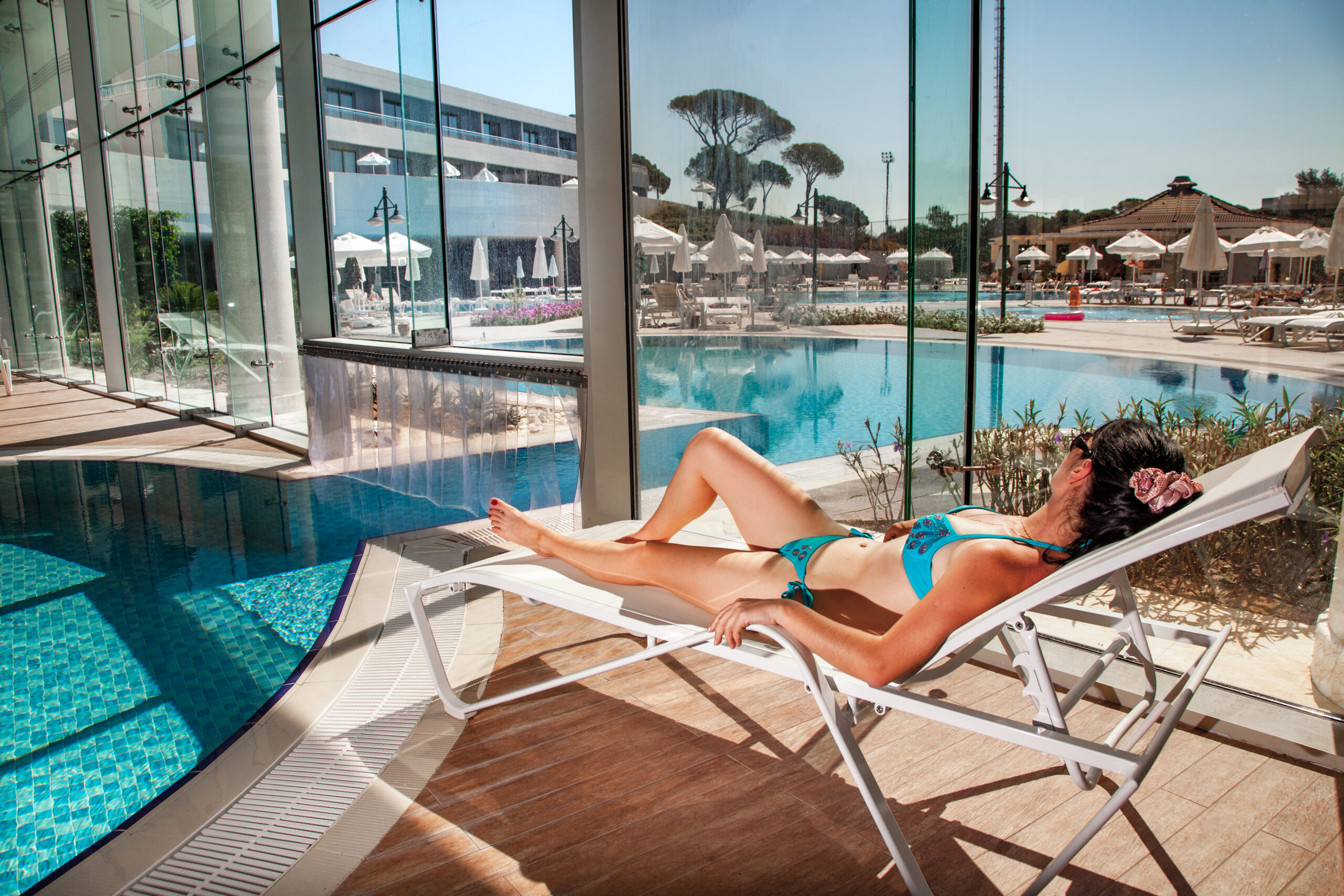
Recent Trends and Innovations in Indoor and Outdoor Pools
Let’s shift gears and explore the latest trends and innovations in the realm of swimming facilities, shall we?
You’ve probably noticed that pool lighting innovations have taken a big leap forward. They’re not just about safety or visibility anymore, but also play a significant role in setting the mood and enhancing aesthetics. LED lights are now making waves with their energy efficiency, long lifespan, and ability to change colors.
What’s more, sustainable pool technologies are gaining traction as well. With people becoming more environmentally conscious, you’ll see solar-heated pools becoming increasingly popular. Using solar panels to heat your pool water isn’t just eco-friendly; it can significantly slash your heating costs as well.
In addition, there’s been a rise in saltwater pools which require less chlorine – an excellent way to reduce chemical use while still maintaining cleanliness and hygiene.
Moreover, automatic pool covers have become a must-have for both indoor and outdoor pools. These covers help conserve water by reducing evaporation, maintain temperature thus saving on heating costs making them another nod towards sustainability.
So whether you’re planning to build or renovate a swimming facility soon – remember these trends! Brighter nights with innovative lighting systems and greener days with sustainable technologies await you.
Frequently Asked Questions
What Are the Differences in Insurance Requirements for Indoor and Outdoor Pools?
Insurance for indoor pools often focuses on safety measures like slip-proof flooring and proper ventilation. Outdoor pools’ insurance typically considers weather-related damage, thus maintenance costs may differ. Always check your insurer’s specific requirements.
How Does the Construction Process Differ Between Indoor and Outdoor Pools?
In constructing indoor pools, you’ll consider material choices that withstand humidity and space utilization for ventilation. Outdoor pools construction focuses on weather-resistant materials and maximizing the available outdoor space.
How Do Indoor and Outdoor Pools Affect the Resale Value of a Home?
Indoor and outdoor pools can increase your home’s resale value, but consider maintenance costs and pool aesthetics. A well-maintained, appealing pool could attract buyers, but high upkeep may deter some potential buyers.
What Are the Environmental Impacts of Indoor Versus Outdoor Pools?
You’re considering the environmental impacts of pools. Indoor pools often require more energy for heating and dehumidification, impacting energy efficiency. Outdoor pools can consume more water due to evaporation. It’s a balance, really.
Can Both Indoor and Outdoor Pools Be Included in the Same Property?
Absolutely, you can include both indoor and outdoor pools in your property. It’ll depend on your design aesthetics and willingness for pool maintenance. Just remember, each type requires unique care and upkeep.

